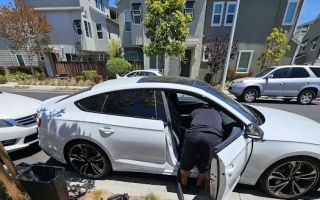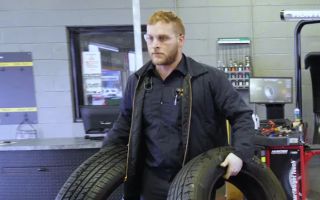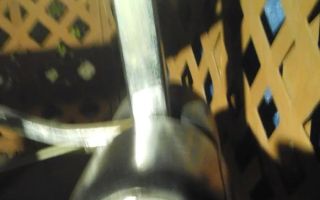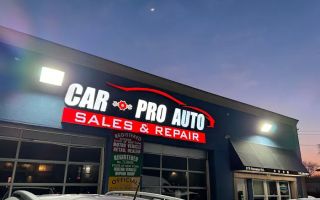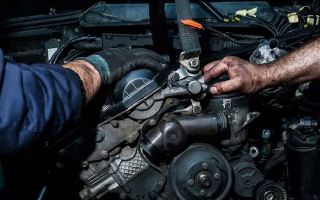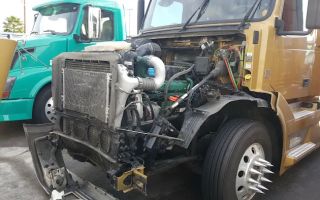How to Fix a Car That’s Leaking Brake Fluid
1. Identifying the Problem: How to Spot Brake Fluid Leaks
It was a typical Saturday afternoon when I first noticed something strange while driving. As I pressed down on the brake pedal, it felt unusually soft, almost like there was no resistance at all. I immediately knew something wasn’t right with my car’s braking system. After a few miles, the warning light on my dashboard appeared. A quick check under the car revealed a small puddle of a reddish-brown fluid, and it didn't take long for me to realize that my car was leaking brake fluid.
If you ever find yourself in a similar situation, you must act quickly. Brake fluid leaks can be dangerous, as they compromise your car’s ability to stop effectively. But don’t worry; with the right approach, you can address this problem yourself. In this article, I’ll walk you through the steps I took to fix my car’s brake fluid leak. From identifying the source of the leak to completing the repair, here’s everything you need to know.
2. Gathering Tools and Safety Gear
Before diving into the repair, it’s essential to gather all the necessary tools and safety gear. The first thing I did was put on a pair of gloves because brake fluid is not only corrosive but can also irritate your skin. You'll also need to make sure you have safety goggles, especially when working around brake fluid, as it can splash and cause irritation to your eyes.
Here’s what I had to gather:
- Gloves and safety goggles
- Brake fluid (make sure to use the type recommended for your car model)
- Jack and jack stands
- Wrench set
- Brake fluid siphon or turkey baster (optional)
- Brake line or hose repair kit (if the leak is from the brake line)
- Clean rags
Once I had everything ready, I made sure to park my car on a flat surface and engage the parking brake. Working safely is crucial, as you don’t want your car to roll while you’re underneath it.
3. Locating the Source of the Leak
Finding where the brake fluid is leaking from was the next step. In my case, I had a pretty good idea because of the puddle of fluid under the car, but if you’re not sure, you may need to get underneath your vehicle to inspect further. I used the jack to lift the car, placing the jack stands underneath for safety.
Once the car was safely lifted, I crawled underneath and began checking the brake lines. The first place to look is at the brake master cylinder reservoir. If the fluid level is low and there’s no visible leak near the cylinder itself, it might be somewhere in the brake lines or the calipers.
In my case, I found a small crack in one of the brake lines near the driver’s side tire. The fluid was dripping steadily, and I knew that fixing this leak was going to take a little more than just adding more brake fluid.
4. Repairing the Brake Fluid Leak
Once I pinpointed the source of the leak, it was time to get down to the repair. There are a few different ways brake fluid leaks can be fixed, depending on where they are coming from. Let me walk you through how I handled it:
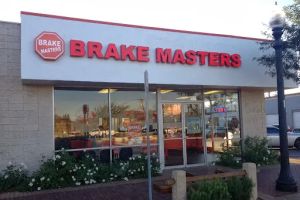
Brake Masters
24411 Main St, Santa Clarita, CA 91321, USA
4.1 Fixing Leaky Brake Lines
If you find that your brake line is leaking, you’ll need to either patch it or replace it altogether. I used a brake line repair kit, which came with the necessary fittings and tubing. The repair was relatively simple. I followed the instructions in the kit and cut the damaged section of the brake line. Then, I connected the new section of the line and tightened the fittings with a wrench.
Once the repair was complete, I used a rag to wipe off any excess brake fluid and checked for leaks by pressing the brake pedal. If the pedal feels firm and there’s no more fluid leaking, then the repair was successful.
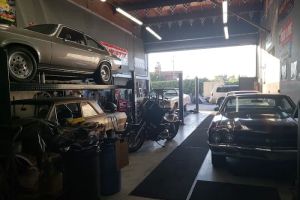
Little D's Muffler & Brakes
2970 S Winchester Blvd, Campbell, CA 95008, USA
4.2 Fixing Leaky Brake Calipers or Hoses
If the leak is coming from the brake calipers or hoses, you may need to replace the seals or the entire hose. In my case, the leak was not from the calipers, but if it had been, I would have had to remove the wheel and brake assembly to inspect the caliper and its seals. Replacing the seals involves removing the caliper, disassembling it, and inserting new seals, which can be a bit tricky, so it’s best left to professionals if you’re not confident in your ability to do it yourself.
4.3 Tightening Loose Connections
Sometimes the leak can be due to a loose connection rather than a crack in the line. I checked the fittings on my brake lines and noticed that one of the connections was a bit loose. Using my wrench, I tightened it, and the leak stopped. It’s always worth checking every connection before moving forward.
5. Refilling the Brake Fluid
With the leak fixed, it was time to refill the brake fluid. I first checked the master cylinder to see how much fluid I had lost. It was important not to let the brake fluid level drop too much, as doing so could cause air to enter the brake lines, which would lead to a spongy brake pedal.
I used the correct type of brake fluid, as specified in my car’s manual. After adding the brake fluid, I checked the brake pedal to ensure it felt firm when pressed. If the pedal felt soft, it might indicate air in the lines, in which case I would need to bleed the brakes to remove the air.
6. Testing the Repair
With everything reassembled and the brake fluid refilled, I lowered the car back to the ground. Before hitting the road, I made sure to test the brakes in a safe environment. I drove around the block slowly, pressing the brake pedal to see how it felt. The pedal should feel firm, and the car should stop without any issues. I also checked for any signs of leaking brake fluid under the car again, just to be sure I had fixed the leak completely.
7. When to Call a Professional
While I was able to fix my brake fluid leak on my own, there are times when it’s best to call in a professional. If you’re uncomfortable working with brake systems or if the leak is coming from a more complex area like the brake master cylinder, I recommend seeking professional help. Brake fluid leaks can compromise your vehicle’s ability to stop, and that’s not something you want to risk.
If you’re in need of immediate assistance and can't make the repairs yourself, don’t hesitate to call a towing service. A reliable towing company like Rescue & Towing can help you get your car to the nearest repair shop quickly, so you can ensure the safety of your vehicle.



